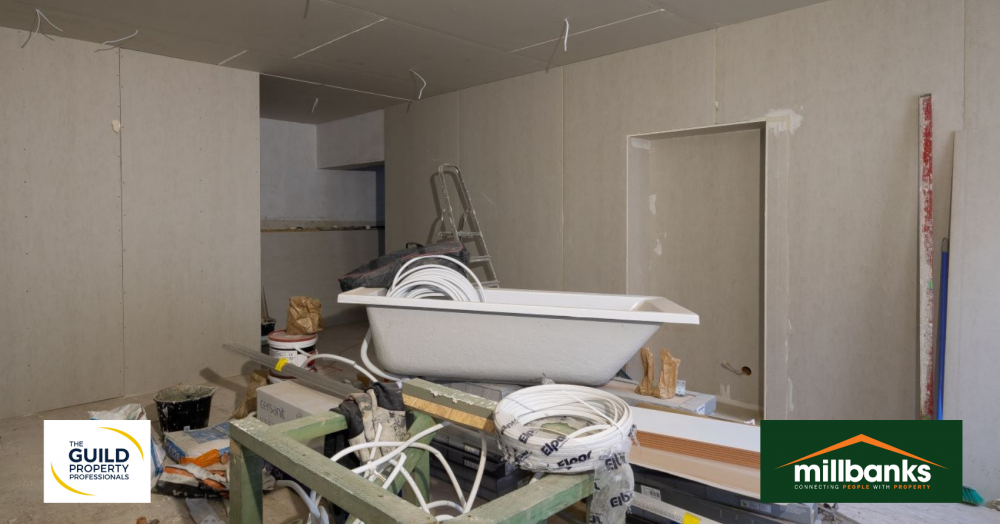Whether you are cosmetically updating your home or undertaking an entire renovation, there are many factors to consider. Conducting work in a sustainable and eco-friendly way is commonly overlooked.
Building and construction expert Thomas Goodman from MyJobQuote has offered five tips to keep your home renovation project, whether big or small, as eco-friendly as possible.
1. Look for eco-friendly paint
Traditional paints tend to contain a high level of volatile organic chemicals (VOCs). VOCs, typically found in solvent-based paints, help preserve the paint in the can. VOCs are chemicals which are released into the air as you paint and can contribute to indoor air pollution causing respiratory illnesses, as well as headaches. In addition to this, when paint is applied without proper ventilation indoors, the VOCs stay in the air and cause harm.
The VOCs in the air are also bad for the environment. When paint is applied to the exterior of a property, the VOCs combine with other airborne pollutants, which can create a smog.
Look for labels which state ‘non-toxic’ or ‘natural'. If there is 5g/l or less of VOCs, then they will be safer than its alternatives. You could also go a step further and look for completely natural paint made from milk proteins and non-toxic pigments, which is the most eco-friendly option, however, it is not as durable as traditional paint products.
2. Deconstruct rather than demolish
When facing a large renovation, you may believe that it could be easier to just knock the whole thing down and start again. However, this will result in a huge waste of materials and can be much more expensive than necessary. Speak with your architect and builders about your ideas and see what they can advise on reducing the environmental impact of the work. You can also discuss with your builder if the demolished materials can be reused or repurposed in any way.
By saving any materials that would otherwise be destroyed, you can repurpose goods still fit for purpose. Saving working light fixtures, carpets and even tiles not only prevents unnecessary waste but saves money. However, you can’t feasibly reuse goods, then consider donating or ensure you recycle them properly.
3. Install low flow devices
When renovating your bathroom, it can be easy to go for style over substance; however, it is important to remember that this is one of the most used rooms in your home. In fact, your toilet accounts for 30% of the total water used in the household. Upgrading to a more efficient toilet reduces the amount of water per flush compared to a standard toilet by up to 10 litres per flush!
Another simple way to install a low flow device, which doesn’t necessarily need much DIY, is switching to an aerated showerhead. The average showerhead uses 12 litres of water every minute, and this number increases to 15 litres when using a power shower! By fitting an aerated showerhead, the flow is reduced but doesn’t compromise on pressure, as the showerhead mixes in the air with the water.
4. Alternative flooring
Although this may seem like an easily forgotten part of your home renovation, eco-friendly flooring is growing in popularity as more renovators grow mindful of where flooring is sourced. In fact, Google searches for “eco friendly flooring” saw a 9900% increase in the past 12 months, reflecting a more eco-conscious mindset.
There are numerous options for an eco-friendly yet durable floor choice. Reclaimed wooden boards and scaffold boards are easy to source locally and are as durable as floors. Another great alternative is bamboo. Bamboo grows much faster than wood and doesn’t require any pesticides or chemicals to aid its growth, making it more of a sustainable option. Bamboo is also durable and moisture resistant, so it is a great option for a bathroom floor.
5. Energy-efficient appliances
If your renovation involves replacing major appliances, then consider investing in energy-efficient goods, as these will last longer and help you reduce your energy waste. When buying a major appliance, for example, a fridge or a washing machine, check their energy rating to determine how much energy they will produce. The lower the ranking, the worse for the environment they will be, and this will result in your home’s carbon footprint increasing.
If you are replacing major appliances, then make sure you dispose of the old appliances correctly. If your goods are still in working order, then donate them to a charity shop or sell them online. If they are no longer working, then contact your local council and see if they offer a household recycling collection for electricals.

